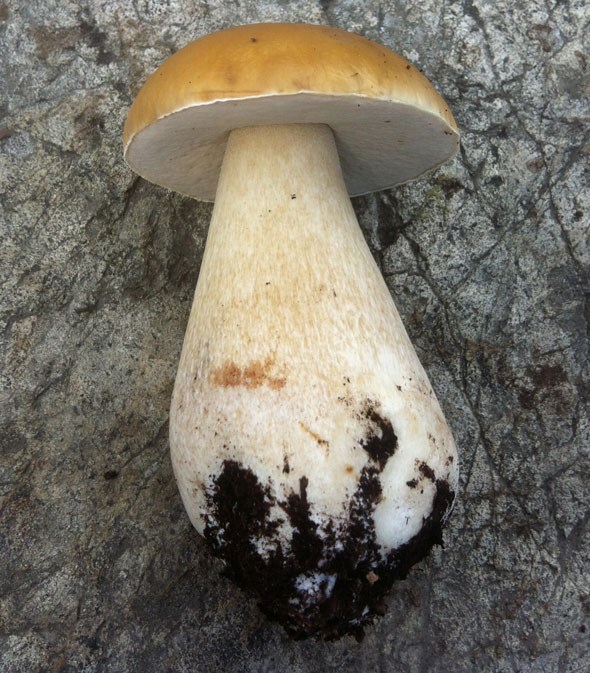If spring is a time when a young man's thoughts turn to love, fall is a time when my thoughts turn to mushrooms. Trudging over field and dale, though thickets and up into the mountains, I am a wild forager of all things delicious.

In the coming months, expect seasonally inspired updates about my pickings... this season is going to be a good one for sure. But for now, down to buisness, the first profile of one of the best seasonal mushroom suspects, the king bolete. Boletus Edulis is also known as porcini in Italy, cèpe when fresh in France, and by a host of other names in the eastern European countries. Whatever you call them, they are prized as the number one of wild mushroom.
This is no flimsy mushroom; dense and heavy they are like tiny nuggets of umami goodness, just waiting to be grilled or pan fried to be served with steaks, pastas or just simply on toast with poached eggs.
Where to find them:
Look at higher elevations, in forest comprised of fir, cedar, hemlock and spruce, generally under the larger mature trees and in areas that have water that periodically runs through them. Think ravines, gulleys and watershed drainages. Not with their feet in water, but with access to moisture. Look in mossy open areas and in clear needle strewn forest floors, lakeshores and creek edges are good bets.
How to be sure you have a the right mushroom:
Use a decent guide, David Aurora authored an excellent one, All that the rain promises and more. Make sure that the mushroom you collect don't stain blue or purple when bruised/cut, the flesh should be clean white and firm. Avoid any with red pores (underneath the cap), and make sure that the specimens you are collecting are free of molds and insect larva. Pick young firm specimens while leaving older ones to drop spores in the forest for future harvests, and slice horizontally across the stem just above the soil, leaving the roots attached for future mushroom production. Use a flat basket to preserve your finds, and make sure to identify them in the full light of your kitchen back home before eating, better to be safe than sorry.
That being said, it is a relatively straightforward mushroom to identify and one of the best for eating.
Happy hunting!


